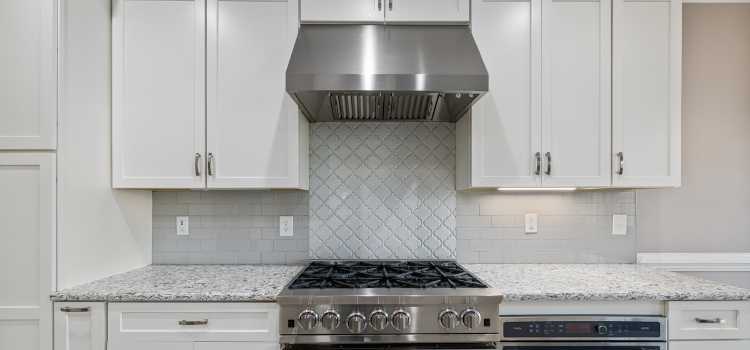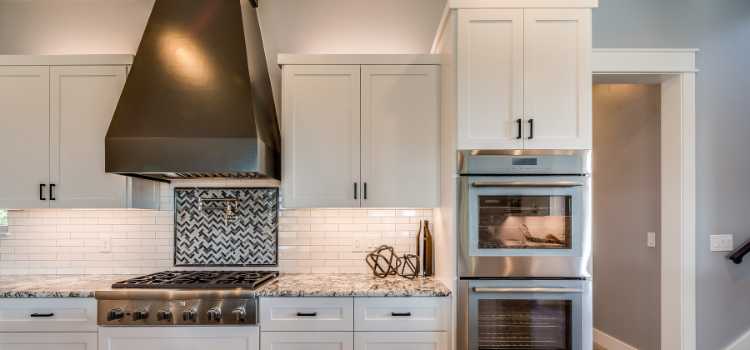As an Amazon Associate, I earn from qualifying purchases

In the culinary landscape, gas ovens have carved out a significant niche, renowned for their responsiveness and even heat distribution. These appliances are staples in many homes, offering a cooking experience that many chefs and home cooks find superior to electric alternatives. Gas ovens are often celebrated for their ability to adjust temperatures quickly, making them ideal for precise cooking and baking.
However, with the benefits of gas ovens come certain responsibilities, among which is ensuring adequate ventilation. This article delves into the necessity of venting gas ovens, exploring the reasons why it’s crucial, the risks of neglecting it, and the various solutions available for effective kitchen ventilation.
Importance of Ventilation
Ventilation is a critical aspect of using a gas oven safely. Unlike electric ovens, gas ovens rely on the combustion of natural gas or propane to generate heat, a process that inevitably produces by-products such as carbon monoxide, nitrogen dioxide, and water vapor. While modern gas ovens are designed to be safe, these combustion by-products can accumulate in the kitchen and home environment if not properly vented.
Adequate ventilation ensures these gases are expelled outside, minimizing the risk of health hazards and maintaining air quality within the home. Effective ventilation is not just about safety; it also impacts the overall cooking experience. Properly vented kitchens tend to be more comfortable, as they regulate heat and humidity levels more effectively.
This is particularly important in small or enclosed kitchen spaces, where the accumulation of heat and odors can quickly become overwhelming. Thus, investing in a good ventilation system is essential for both safety and comfort.
Potential Risks of Inadequate Ventilation
The dangers of inadequate ventilation in the kitchen cannot be overstated. One of the most significant risks is carbon monoxide poisoning, a serious and potentially fatal condition caused by inhaling carbon monoxide—a colorless, odorless gas produced during combustion.
Symptoms of carbon monoxide poisoning include headaches, dizziness, weakness, nausea, and confusion, which can escalate to loss of consciousness and death if exposure continues. Given these risks, it is vital for households with gas ovens to prioritize ventilation.
Beyond immediate health risks, poor ventilation can also degrade indoor air quality over time. The combination of combustion gases and increased humidity can contribute to the growth of mold and mildew, especially in areas with poor air circulation. This not only affects the structural integrity of a home but can also exacerbate respiratory conditions such as asthma and allergies.
Benefits of Proper Venting
Proper venting of a gas oven offers numerous benefits that extend beyond safety. One of the most noticeable advantages is the significant improvement in air quality. By expelling harmful gases and excess moisture, a well-vented kitchen helps maintain a healthier living environment. This is particularly important for families with young children, elderly members, or anyone with pre-existing health conditions that could be aggravated by poor air quality.
Moreover, proper ventilation contributes to the overall efficiency and effectiveness of cooking. By managing heat and humidity, it ensures that cooking temperatures remain stable, which is crucial for the success of many recipes. Additionally, effective venting helps control lingering odors, leaving the kitchen smelling fresh and clean, regardless of what’s on the menu.
Types of Venting Systems for Gas Ovens

When it comes to venting gas ovens, several options are available, each with its own set of advantages and challenges.
Range Hoods
Perhaps the most common solution, range hoods are installed above the oven to capture and expel air pollutants. They come in various designs, including ducted and ductless models. Ducted range hoods are connected to a vent that leads outside, providing the most effective removal of combustion by-products.
Ductless models, on the other hand, use filters to clean the air before recirculating it back into the kitchen—a solution best suited for apartments or homes where exterior venting isn’t feasible.
Downdraft Systems
These systems are built into the cooktop, drawing air downward and venting it through ducts beneath the floor. While less common, downdraft systems can be a practical choice for kitchen islands or where overhead space is limited.
Wall Vents
For those seeking a more discreet venting solution, wall vents can be installed to lead directly outside from the oven. This option may require more extensive installation work but can be highly effective in expelling gases directly.
Each of these systems has its pros and cons. Range hoods, for instance, are highly effective but may require significant space and installation effort. Downdraft systems are less obtrusive but may not provide as much power as a traditional hood. Wall vents offer a middle ground but can be challenging to retrofit into existing kitchens.
Tips for Ensuring Safe and Effective Ventilation in the Kitchen
To ensure your kitchen is safely and effectively vented, consider the following tips:
- Choose the Right Venting System: Assess your kitchen layout and cooking habits to determine the most suitable venting system. If you frequently cook with high heat or fry foods, a powerful ducted range hood may be the best choice.
- Install and Maintain Properly: Ensure your venting system is installed according to the manufacturer’s instructions and local building codes. Regular maintenance, such as cleaning filters and ducts, is crucial for optimal performance and longevity.
- Use Additional Safety Measures: Supplement your ventilation system with carbon monoxide detectors, especially if your kitchen is not equipped with a ducted range hood. These detectors provide an early warning of dangerous gas levels, offering an extra layer of protection.
- Regularly Check Airflow: Test your ventilation system periodically to confirm it’s functioning correctly. A simple way to check is by observing how effectively the system clears steam or smoke from the kitchen.
- Consider Professional Advice: If you’re unsure about the best venting solution or installation specifics, consult with a professional. An experienced contractor can provide valuable guidance tailored to your kitchen’s needs.
Conclusion
The need for venting a gas oven is not just a matter of preference but a critical component of home safety and comfort. Proper ventilation ensures the safe removal of combustion by-products, improves air quality, and enhances the overall cooking experience.
By understanding the different venting options and implementing the right system for your home, you can enjoy the benefits of a gas oven while minimizing health risks and maintaining a pleasant kitchen environment. Prioritizing ventilation is an investment in the safety and well-being of your household, making it an essential consideration for any kitchen equipped with a gas oven.
FAQ
Can you have an oven without a vent?
Yes, you can have an oven without a vent, particularly if it’s electric. However, for gas ovens, proper ventilation is recommended to safely expel combustion by-products. Venting helps maintain indoor air quality and reduces the risk of carbon monoxide buildup, ensuring a safer cooking environment.
Why don’t gas ovens need a flue?
Gas ovens often don’t require a flue because they are designed to operate safely with appropriate ventilation systems like range hoods or exhaust fans. These systems effectively manage combustion gases, such as carbon monoxide, without the need for a traditional chimney flue.
Does a gas oven need oxygen?
Yes, a gas oven requires oxygen to facilitate the combustion process. Adequate oxygen supply is crucial for efficient burning of gas, ensuring optimal performance and minimizing the production of harmful by-products like carbon monoxide. Proper ventilation helps maintain a sufficient oxygen level in the kitchen.
Does a gas oven need a fan?
While not all gas ovens need a fan, having one can improve ventilation by circulating air and expelling combustion gases more effectively. A fan, often part of a range hood or exhaust system, helps maintain air quality and regulate kitchen temperature, enhancing safety and comfort.
As an Amazon Associate, I earn from qualifying purchases